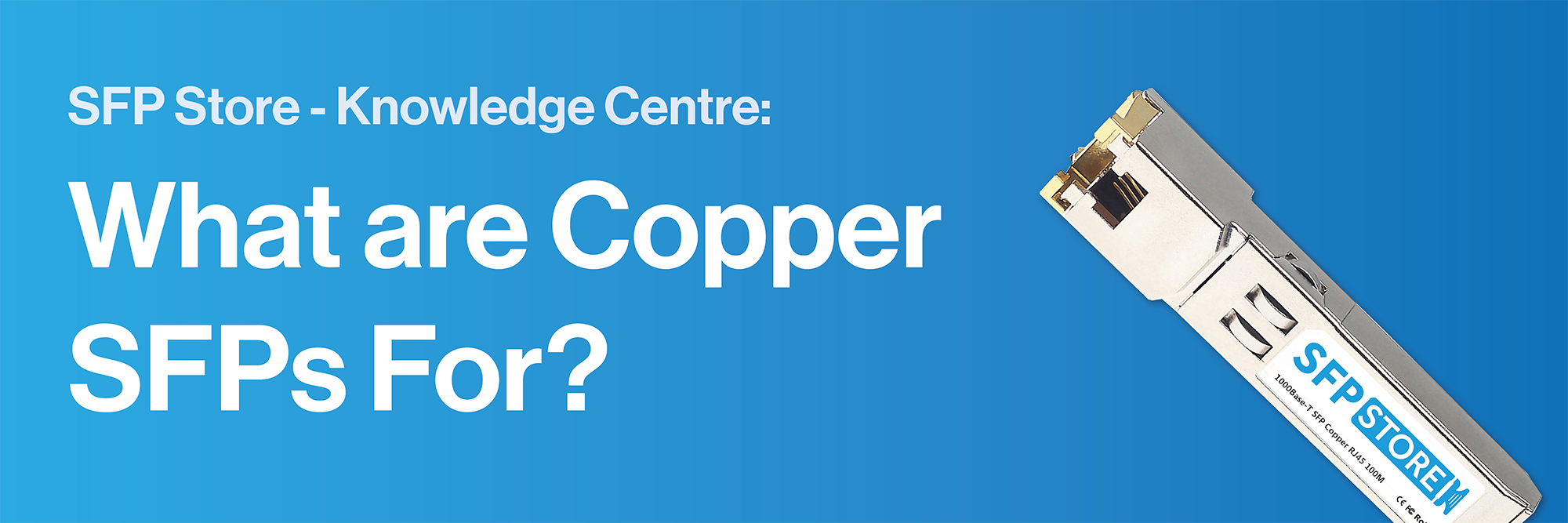 Copper small form-factor pluggable (SFP) modules are used in networking applications to provide connectivity options in devices such as switches, routers, and network interface cards.
Copper small form-factor pluggable (SFP) modules are used in networking applications to provide connectivity options in devices such as switches, routers, and network interface cards.
They specifically utilise copper patch leads via RJ45 connectors to enable network connections when the distance between devices is relatively short and the use of fibre optic cables is not necessary or feasible. Some key applications of Copper SFPs include:
Ethernet Connectivity
Copper SFPs enable gigabit ethernet connections over copper cabling, such as Cat5e or Cat6 cables. They are useful for connecting devices within a local area network (LAN) or for providing copper-based uplink connections between switches.
Cost-Effective Solutions
Copper SFPs are generally more affordable than their fibre optic counterparts. They provide a cost-effective alternative for short-distance networking requirements.
Legacy Infrastructure
In situations where older networking infrastructure relies on copper cabling, they can be used to extend the life of these systems without the need for costly fibre optic cable upgrades.
Data Centres
They are commonly used in data centres for connecting servers, switches, and other network equipment within a rack or between adjacent racks. They provide high-speed connectivity over copper while maintaining compatibility with existing infrastructure.
It's important to note that the maximum distance supported by copper SFPs is quite limited compared to fibre optic SFPs. Copper SFPs typically have a range of up to a few hundred metres, depending on the specific module and cable quality, whereas their fibre counterparts can support significantly longer distances.
Overall, Copper SFPs offer a flexible and cost-effective solution for short-range copper connectivity needs in various networking environments.

